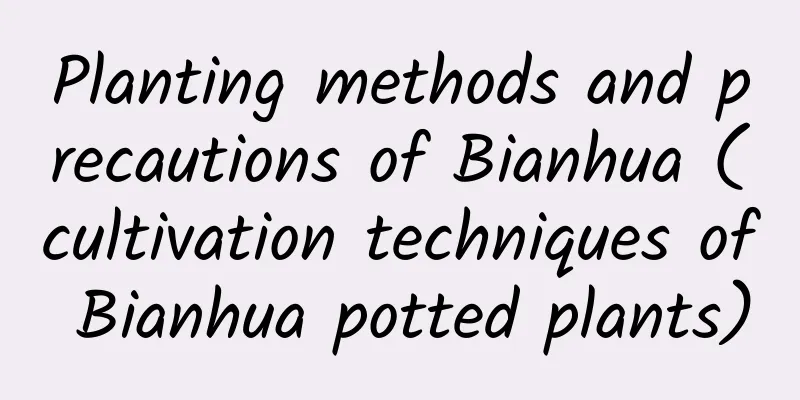Don’t throw away expired ointment! Use it to grow flowers, the leaves will be shiny and the flowers will bloom!

Erythromycin ointmentErythromycin ointment and eye ointment are available in almost every household. This small ointment, which costs only a few cents a tube, can be used to grow flowers, and the effect is very good! 1. Inhibit spot diseaseFoliage plants like green ivy will have many spots on their leaves after being infected with leaf spot disease. Apply erythromycin ointment on the diseased leaves, evenly on both sides, to kill germs and inhibit infection. 2. Wound sterilizationWhen flowers are moved and maintained, they are inevitably bumped and scratched accidentally. At this time, applying erythromycin on the wound can have a good bactericidal effect! Daktarin ointment1. Prevent and control root rotWhen flower lovers repot their flowers, they often accidentally damage the roots of the flowers. At this time, apply some Daknin on the root wounds, and then put them in the pot after drying them for a while, which can prevent the wounds from rotting and causing root rot. 2. Disinfection of black rot water for succulent plantsAfter beheading the succulent plant and digging out the black rot parts, you can apply a small amount of Daknin ointment on the wound, which can have a good bactericidal effect. In addition to these small ointments, some sterilized water can also be used to grow flowers! Hydrogen peroxide solution1. Increase the oxygen content of the hydroponic bottleAdd a small amount of hydrogen peroxide to the hydroponic bottle. The hydrogen peroxide will slowly release oxygen, increase the oxygen content in the hydroponic bottle, and promote plant growth. 2. SterilizationFlowers with fleshy roots like Clivia often suffer from root rot. After treating the root rot, if there is no professional disinfectant on hand, hydrogen peroxide can be used instead. Potassium permanganate solution1. Inhibit root rotWhen repotting flowers, potassium permanganate solution is the preferred sterilization solution for many flower lovers. Soak the flowers for about 30 minutes, then take them out, dry them and put them in pots, which can effectively prevent root rot! 2. Disinfection of flower soilAfter diluting potassium permanganate with boiling water, soak the flower pot with soil in the potassium permanganate solution. After the water cools down, take out the flower pot and rinse off the residue with clean water. The flower soil is now disinfected! Calcium TabletsCactus requires a certain amount of calcium fertilizer to grow, and some of the fertilizer usually contains a certain amount of phosphorus. You can crush the calcium tablets and mix them in the flower soil or directly add water to water the flowers. Don’t throw away expired medicines at home! Do you flower lovers have any exclusive secret recipes for using medicine? Welcome to leave a message and share with everyone~ |
<<: Chlorophytum types and names pictures
>>: The breeding methods and precautions of Yemen iron
Recommend
Can I keep the small buds grown by the Master plant alive if they are knocked off? (Propagation of new buds grown on the Master plant by cuttings)
Can the newly grown buds of the Master survive by...
How to grow featherleaf lavender
1. Rizhao This plant with small tubular flowers i...
What to do if the leaves of Kalanchoe turn yellow and soft
1. Reduce watering Reason: When caring for Kalanc...
What soil is suitable for planting jade dew
Soil for Gyokuro Jade plant likes acidic soil, an...
What's wrong with the bear's paw dropping leaves? Can it be planted with the dropped leaves?
1. Why does Bear's Paw drop its leaves? 1. Th...
Cutting method of Kalanchoe
1. Cutting cuttings Select a pot of healthy Kalan...
When is cotton planted?
Cotton planted too early may suffer damage from l...
Must-buy Clematis: Three Types of Hard-Flowering
1. President The President is easy to maintain an...
How long is the growth cycle of Codonopsis pilosula?
Introduction to the growth of Codonopsis pilosula...
How to grow green radish in water in winter
1. Ensure the temperature The most important thin...
Cultivation methods and precautions of ground juniper
1. Watering It likes a humid environment and usua...
How to propagate petunia by cuttings
1. Time selection If it is grown indoors, then an...
How to grow caterpillars to make them bloom quickly and abundantly (how to grow caterpillars to make them bloom quickly and abundantly)
Growth habits of caterpillar fairy finger Sandalw...
Do I need to water the peony just after planting it?
1. Do you need to water it? It can withstand drou...
Cultivation methods and maintenance of old red lotus piles
How to grow red lotus into an old pile If we want...









